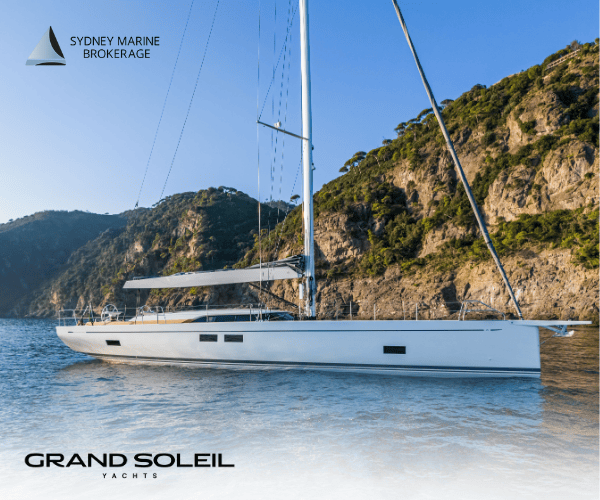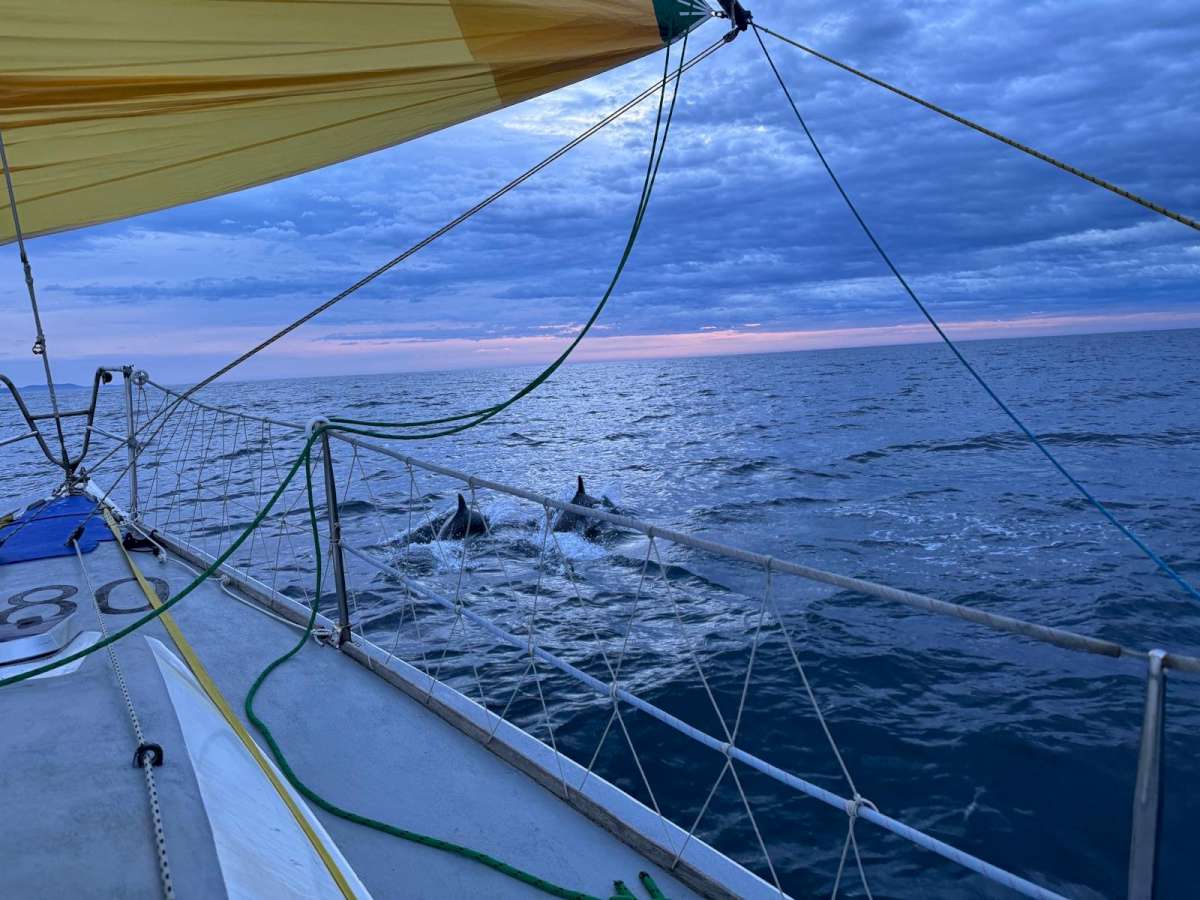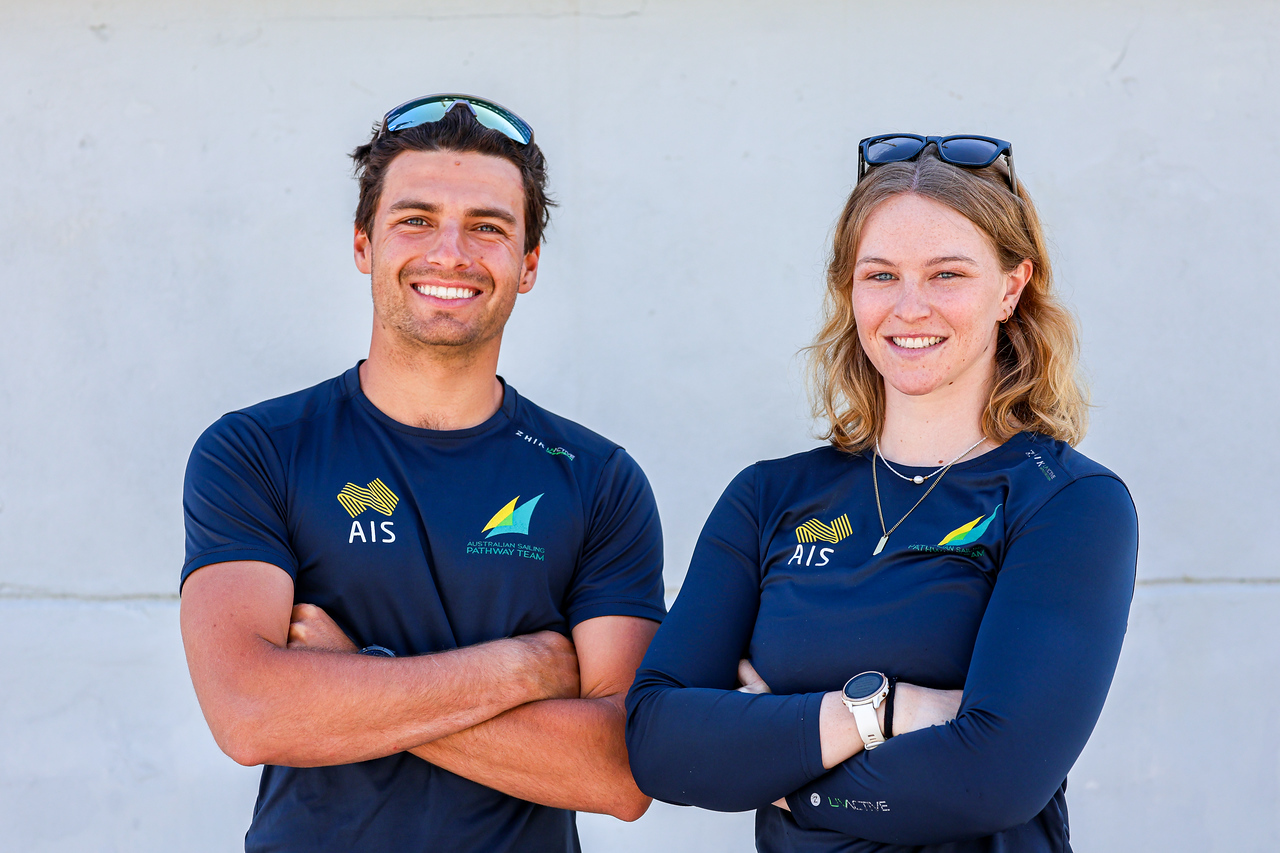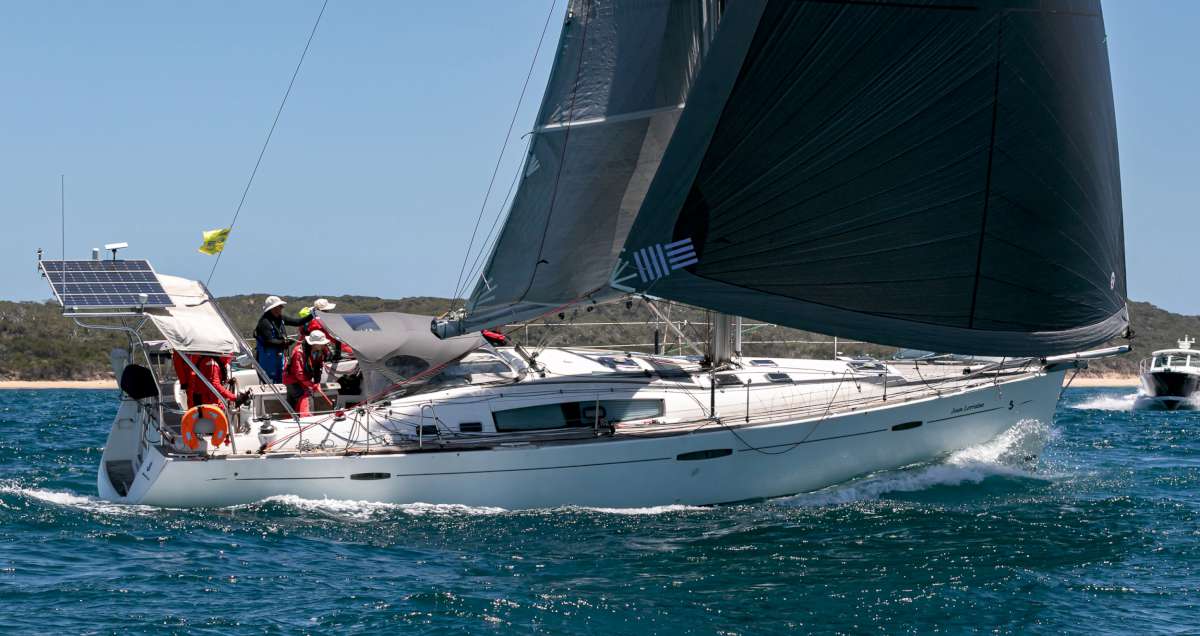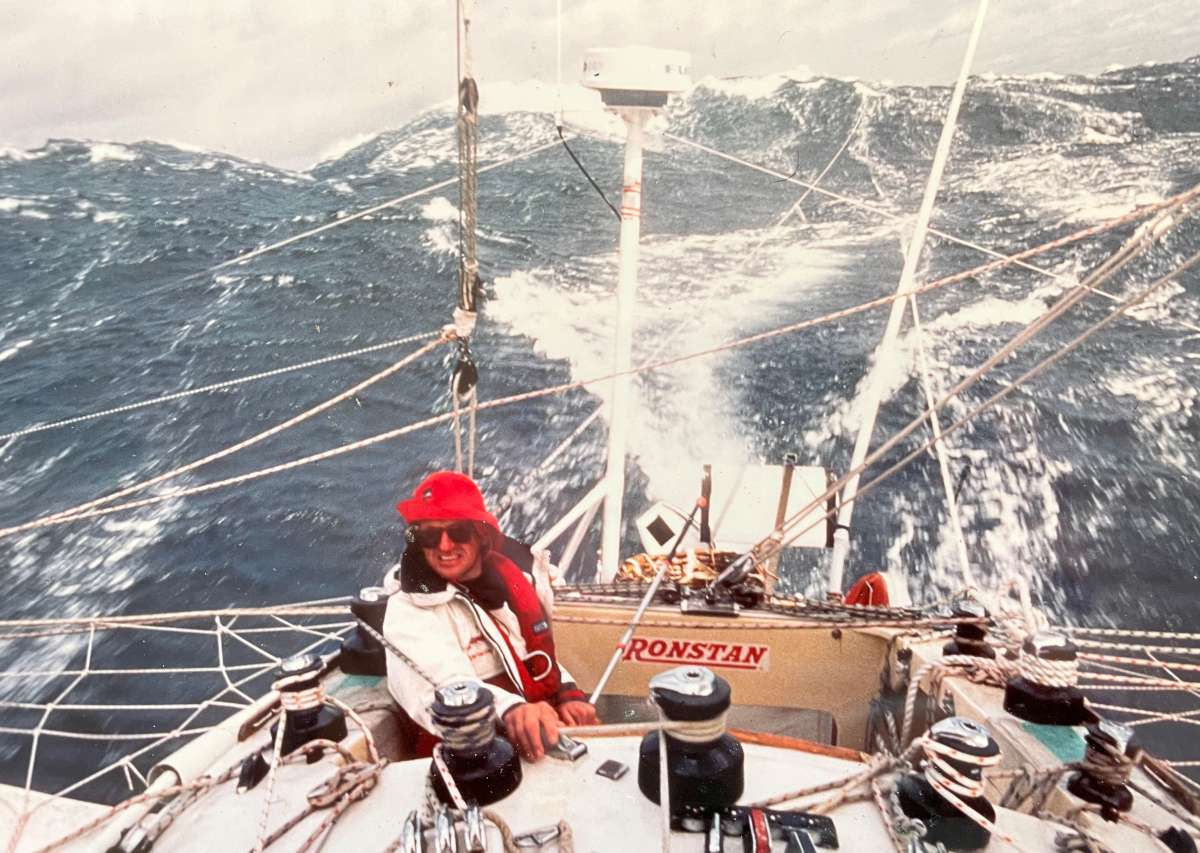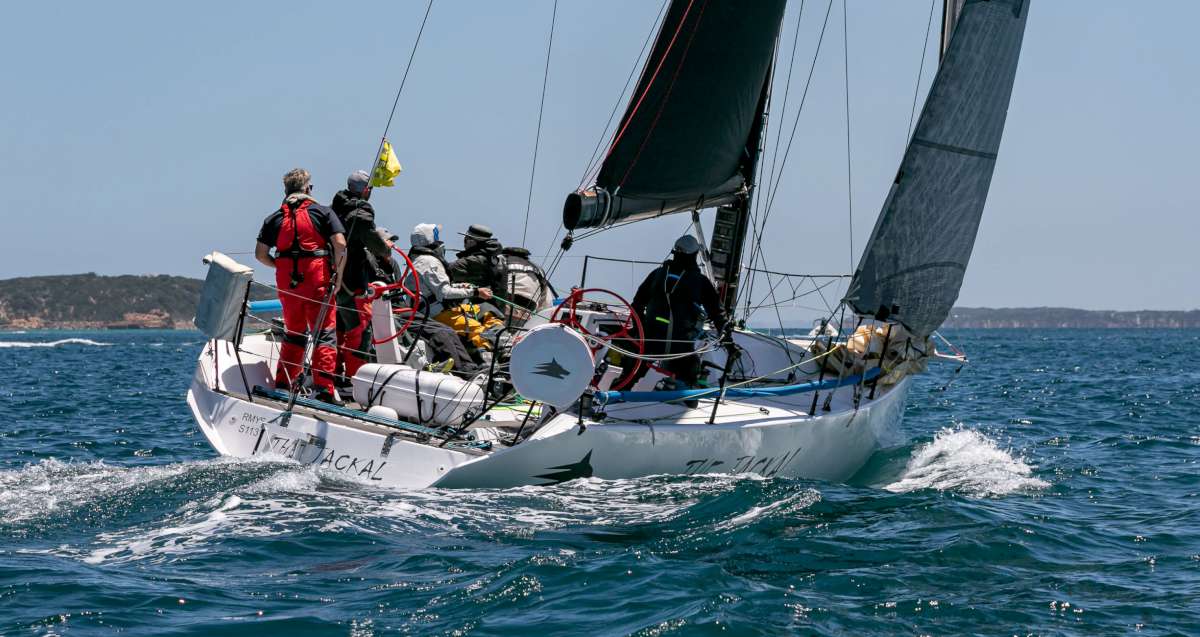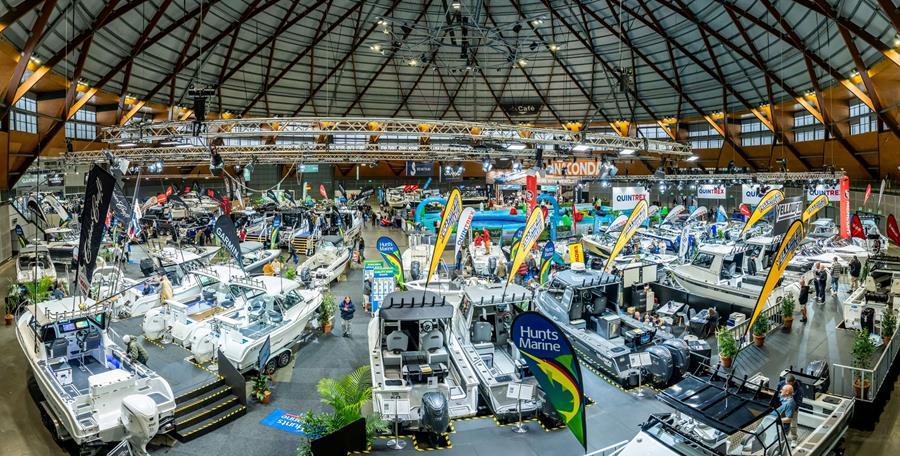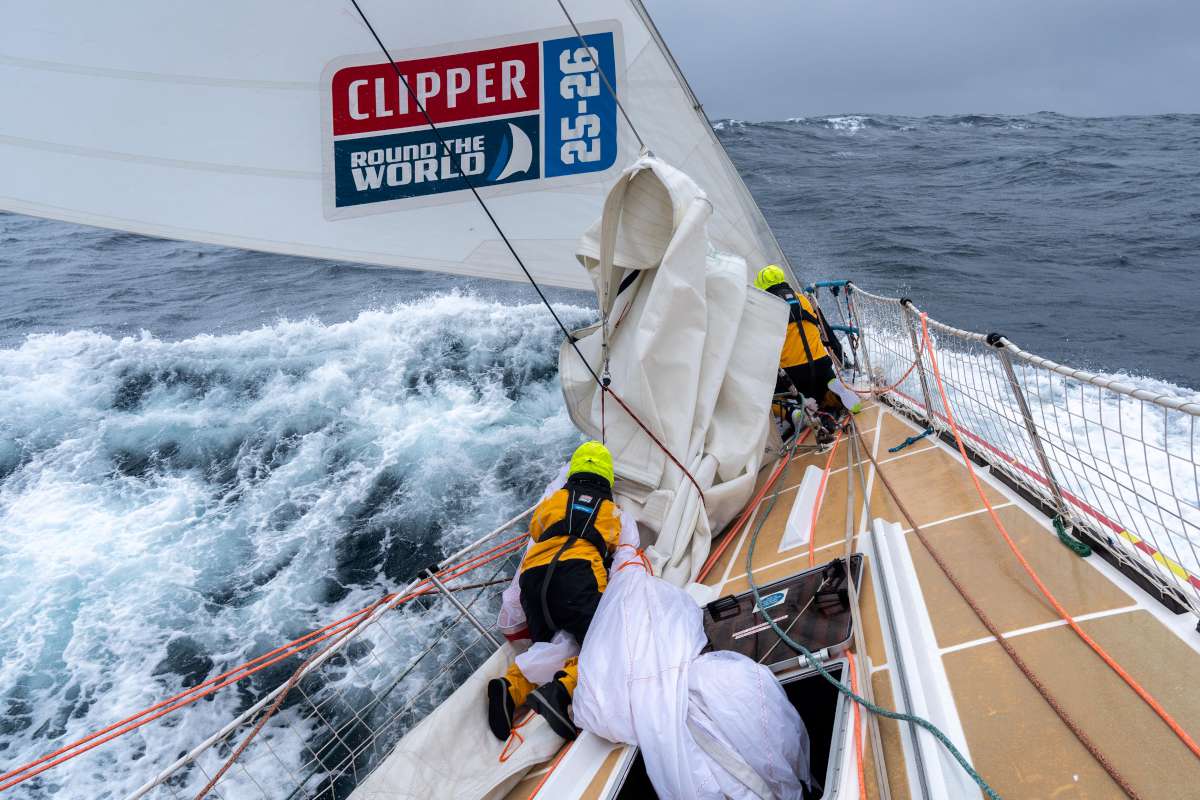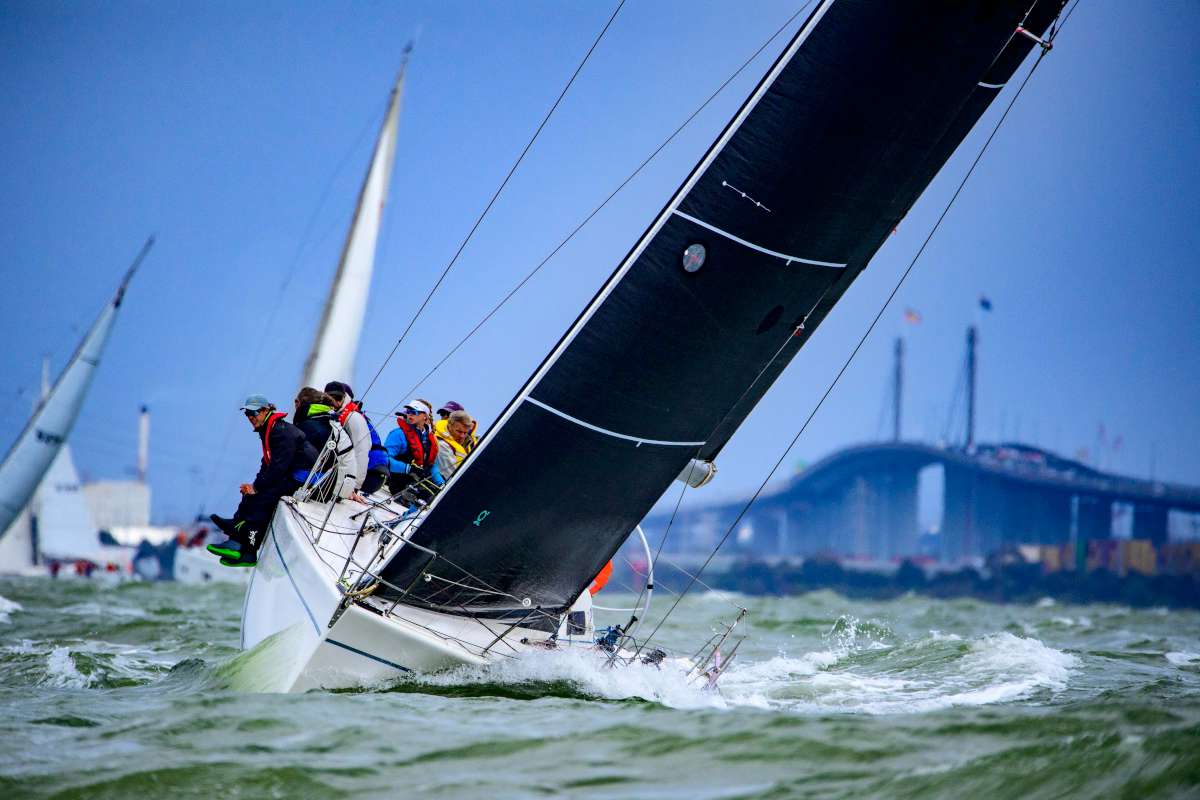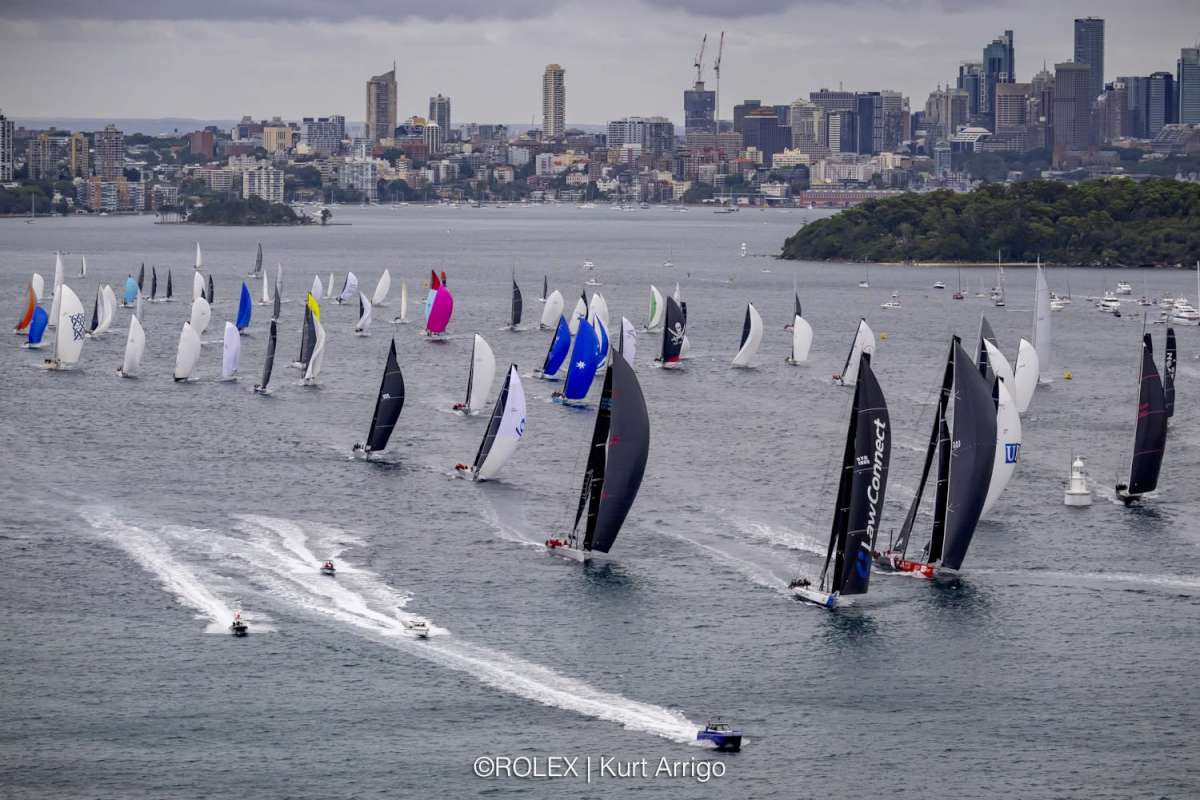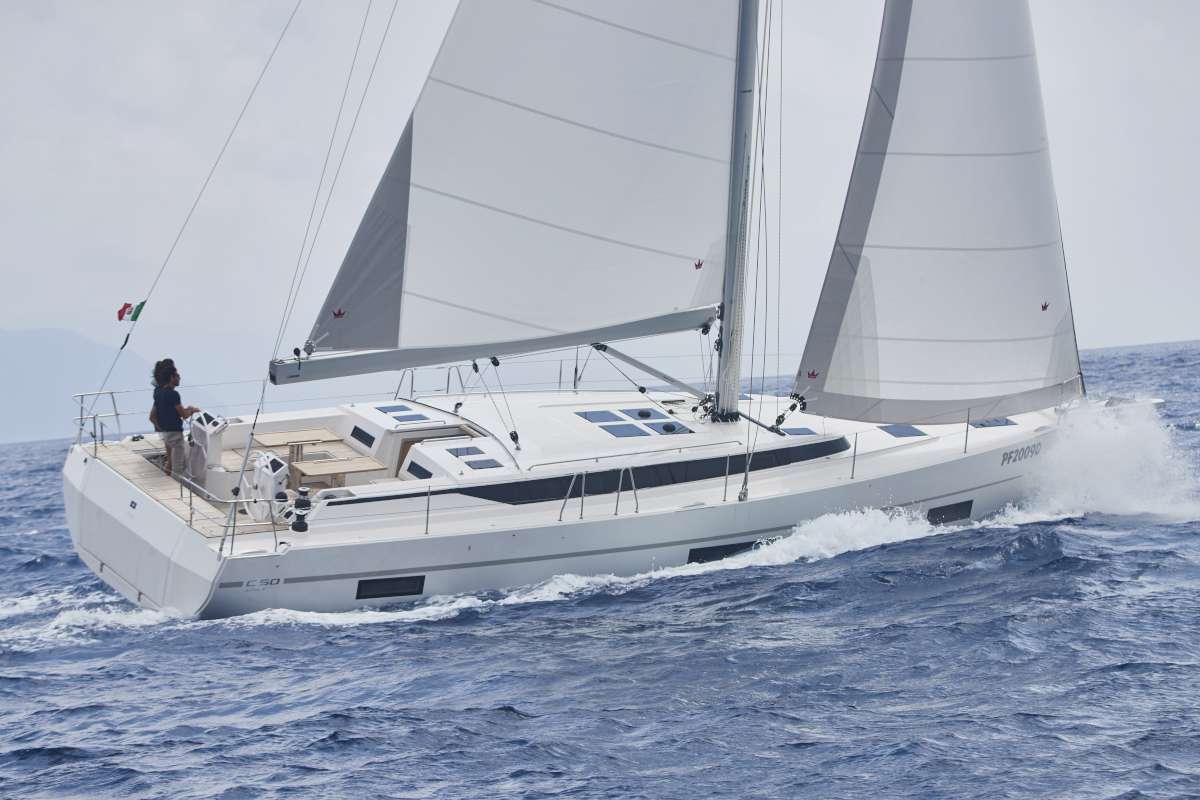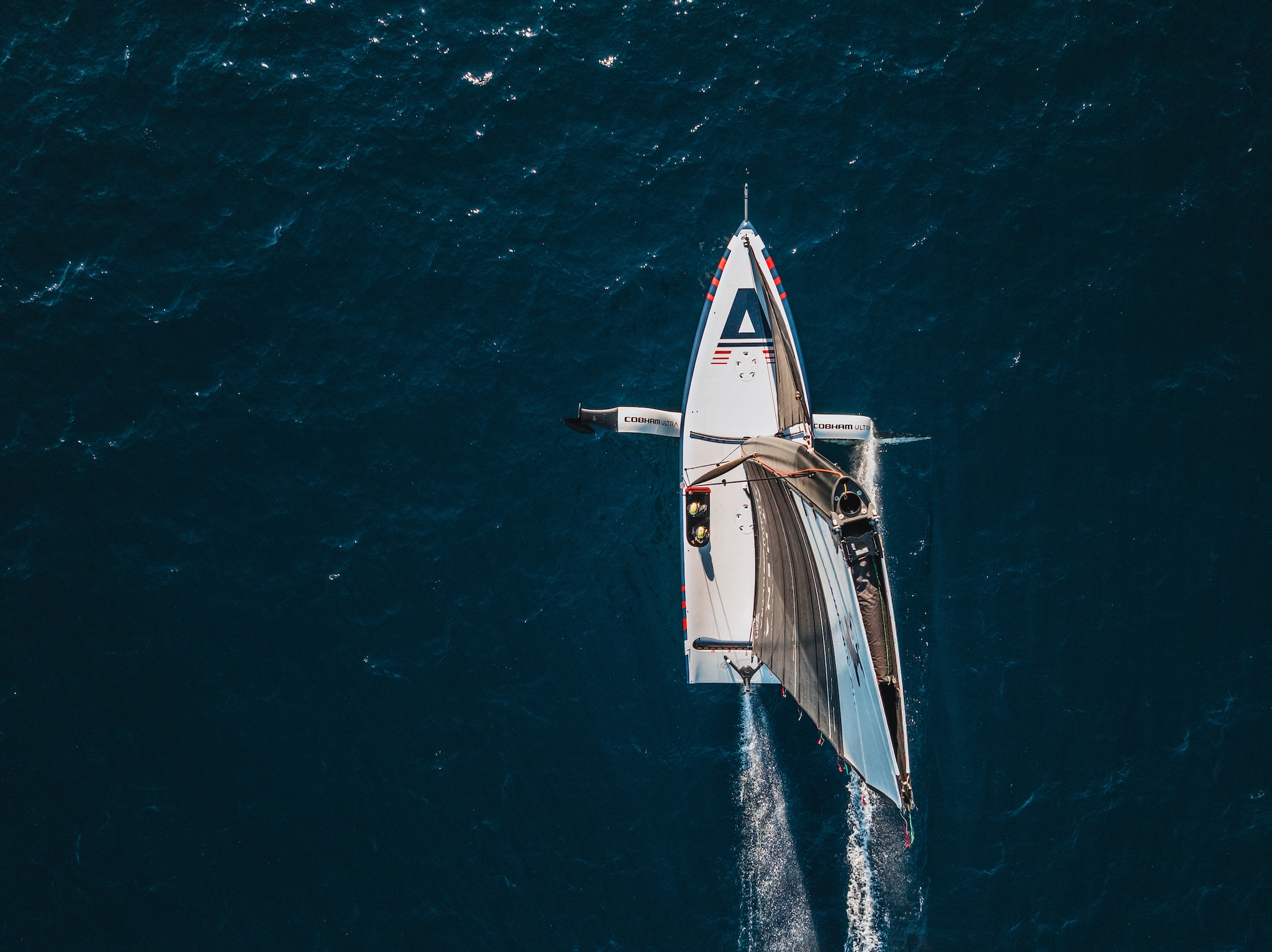Fast tips for steering any boat faster around the course in a range of conditions, by David Dellenbaugh.
Steering is the technique of guiding a boat from one point to another through windshifts and waves.
It's a subtle art that requires concentration, practice and a delicate sense of feel. Whether you are sailing upwind or downwind, good steering ability may be the most critical factor in sailing your boat fast around the course.
Steering a sailboat involves a series of continual turns. Even though most of these turns are relatively small, almost all of them require moving the rudder to one side or the other. And as most sailors know, any time you angle the rudder off centreline you create additional drag.
So the first rule of thumb for steering fast is simply to minimise steering. Reduce rudder movement and rudder angle by aiming the boat straight as much as possible, especially in flat water and steady
wind. Many helmspeople have a nervous habit of oversteering, which is slow.
Instead, try to hold your wheel or tiller very still.
Of course, you can't avoid turning the rudder altogether. There are many, many times in each race when the benefit of turning the rudder far outweighs the extra drag you create. For example, the rudder is essential for steering through waves, rounding marks and manoeuvring near other boats.
But when you do steer the boat, try to accomplish this with as little rudder movement as possible. The trim of your sails and the placement of crew weight are two ways to have a huge effect on where the
boat goes without using the rudder at all.
The entire crew must use these techniques aggressively to help the helmsperson steer the boat.

Find a 'driving stance' comfortable
IN MANY SPORTS, athletes have a particular position they assume while playing the game. In baseball, football, golf, tennis, cricket, rugby and many others, the players use a ‘stance' that helps them get comfortable and ready for action.
The same is true in sailboat racing.
In order to steer a boat fast, the person holding the tiller or wheel must have a good ‘driving stance'. This includes where and how they sit or stand, and it varies according to the boat, the person and the
sailing conditions. Here are some factors to consider.
A good view
While a helmsperson must have a good sense of feel, he or she also relies heavily on many visual clues such as telltales, wind and waves on the water, instruments and so on.
For this reason, it's important for the driver to be in a position where they have a clear view. The helmsperson should usually be:
• TO WINDWARD: You almost always will have a much better view from the windward side (see ‘Should you ever sit to leeward?' on opposite page).
• FORWARD: By moving forward you will get a better view of certain key variables such as the telltales on the jib and waves on the bow.
• HIGHER UP: You will also be able to see more (e.g. waves and wind on the water) by elevating. If you have a wheel, it's often better to stand than sit. Downwind, you might stand even if you have a tiller.
Comfort
Besides a good view, the other most important factor for a helmsperson is being comfortable. Many races are very long and require an intense amount of concentration and often, physical exertion. If you are not driving in a comfortable postions, it will be very difficult to stay focused 100 per cent on steering. That means your speed will suffer.
• LEVERAGE: Make sure that you are in charge of the helm and not vice versa. For example, when it's windy, wear nonskid shoes and sit so the tiller extension makes a 90 degree angle with the tiller.
• BE ERGONOMIC: Try to absorb the pull of the helm and mainsheet with your legs rather than your back. Don't stay in one position for too long. If you're steering with a wheel, sit for a while instead of
standing. Change your grip on the mainsheet. Consider tacking!
• CLOTHING: Wear gloves so you can hold the mainsheet longer. Be sure you are warm enough, and drink water during the race.

Other factors
Being comfortable and having an unobstructed view are by far the two most important things when choosing your driving stance. Here are two other considerations.
• WINDAGE: In the ideal world, the helmsperson should stay low when sailing upwind so he or she creates the least amount of windage possible. In practice,however, this reduction in drag does not
nearly offset the critical steering input that you lose by compromising your position. So I wouldn't worry about windage.
• COMMUNICATION: You must steer from a place where you can have easy, clear communication with the rest of your team.
Should you ever sit to leeward?
When I was 13 years old and racing a Blue Jay one-design, I often used to steer from the leeward side. That perspective made it seem like the boat was pointing higher (because the forestay looked further to windward), and sitting so close to the water made it feel like we were going faster.
But a long time ago I changed that opinion. Now when I am steering I sit (or stand) on the windward side of the boat 99 per cent of the time. For all the reasons stated on the previous page, being on the windward side makes it so much easier to gather all the information needed to do a good job of steering. I steer from the leeward side only when I am in one of the following situations:
• VERY LIGHT WIND: Sometimes the wind is so light that you need all crew weight (including the helmsperson) on the leeward side in order to heel the boat enough to keep the sails full. (This applies
upwind or downwind when steering with a wheel or tiller.)
• DOUBLE-HANDED DINGHY: When you are sailing downwind on certain boats (e.g. 420 or 470), the crew must sit on the windward side to see/play the spinnaker,so the helmsperson must sit to leeward
to balance the boat. (This applies to doublehanded dinghies downwind.)
• GROOVING IN LIGHT AIR: When the wind is light and shifty and it's hard to find a groove, it often helps to steer from the leeward side where you can see all the telltales along the luff and anything else that's happening with the headsail. (This applies upwind or downwind, primarily when steering with a wheel.)
• TACTICAL REASONS: When you are racing upwind and you converge with a boat (or a mark) on your leeward side, it often helps to steer from that side. (This appliesprimarily upwind when you are steering
with a wheel.)
Get a grip
When you're steering a boat with a tiller, the way you hold the extension can make a big difference. As far as I'm concerned there are two grips to consider – the ‘microphone' grip and the ‘frying pan' grip.
‘Microphone' grip
I use this grip (pictured below) 100 per cent of the time because I like having the end of the tiller extension in front of my body. My personal preference is to hold the hiking stick right at the end, with
my thumb able to go under it or across the end. I feel this gives me better control of the helm and makes it much easier to trim the mainsheet with two hands. Plus I hate having a tiller extension that
extends beyond my grip and sometimes pokes me in my stomach.
For this reason, I adjust the length of the stick so I can hold it comfortably in my lap when I'm in my normal driving position for the existing conditions. I also like to have a small knob at the end of it to
keep my hand from slipping off.


‘Frying pan' grip
This grip (see main photo) is good for steering the boat when you want to minimise rudder movement. Consider this when you have flat water, steady wind, a relatively large rudder or a helmsperson who tends to oversteer. Once you get the boat in the groove, you can actually rest the tiller extension on the deck to keep the rudder perfectly steady. This grip does not work when you need two hands for trimming the main.
Upwind steering guides
WHEN you are driving a boat upwind, there are many visual guides you can use to help you get and keep your boat in the groove. I typically use three primary sources of information to help me steer the boat (unless I have instruments – see next month's Speed & Smarts). These are the jib telltales, the boat's angle of heel and nearby racing boats.
It is very possible to steer the boat fast using any one of these guides. For example, you could spend 100 per cent of your time looking at just the telltales or at the angle of heel. Or you could watch only the boats around you and adjust your course entirely according to them.
But the idea is to use all these sources at the same time. There are two reasons for this.
First, each guide will likely give you at least a little information that is different than the others. And second, you can use each guide as a check on the others. There is probably a direct correlation between how well you steer the boat and the number of different steering guides that you use while driving.

Jib telltales
One of the best visual clues for steering upwind are the telltales along the luff of your jib or genoa. This is where I look most often when I'm driving. Like a lot of helmsmen, I depend too much on this single source of information. But telltales probably give you the most accurate indication of exactly how close you are sailing to the wind and what 'gear' you are in.
Angle of heel
Many top sailors use the boat's angle of heel as a primary guide for sailing upwind. One way to keep track of heel is by watching the angle between your headstay and the horizon. The goal is to keep this angle steady while you are steering upwind.
Even when you're not looking at the headstay, it's fairly easy to gauge changes in heel by using your sense of feel and balance.
When you feel the boat heel over or straighten up, you know that you must make a steering change to keep a steady angle of heel.
Other boats
How you perform relative to your competitors is key in evaluating the job you are doing as a driver (see photo and caption below). But those other boats can also give you valuable information to help
you steer your boat faster.
When I'm driving, I like to have one person give me continuous feedback about our speed and height compared to nearby boats. This information is very helpful in deciding whether I should steer higher or
lower, for example. It is also invaluable in identifying and fixing any speed problem we may have.
Sensory clues
While there are many great visual clues for steering a sailboat, don't forget the guides you can feel with your senses. These include the sensation of speed through the water and pressure on the helm.
By tuning into these variables and remaining sensitive to how they change from moment to moment, you can learn a lot about what your boat needs in order to steer it fast. If you feel the boat slow down,
for example, you may need to bear off a little to build speed. If you suddenly feel more windward helm, maybe you should head up slightly to flatten the boat and ease the helm.
Some of these guides work for sailing downwind too. Since the ‘groove' on runs is more elusive, it's good to find as many clues as possible when steering on runs.
N.B – Whenever you are racing and you want to judge how fast you are going or how well you are steering, there is only one way to measure this – you have to compare your performance to that
of another nearby boat. Differences in speed and technique among sailboats are so subtle that you can never measure them accurately with instruments or your sense of feel.
What are the implications of this for steering? First of all, you cannot evaluate how good a job you are doing by watching your speedometer or judging how the boat ‘feels'. Second, the best way to improve your steering ability is by participating in a lot of two-boat testing because this gives you instant feedback. And third, the job of steering is intimately connected with everything else (e.g. sail trim, tuning) that affects the relative performance of two boats.
Telltale Gears
The action of your jib telltales is a good guide for steering fast upwind. You want the leeward telltales streaming straight back almost all the time. On the windward side the optimal telltale action depends on a number of factors like your boatspeed, wind speed, waves and tactical considerations.
Normal mode: Windward telltales lift at nearly a 45 degree angle much of the time, and you seldom see a ‘luff' in the front of the jib. Steer in this mode when you want an optimal combination of speed and pointing to maximise VMG upwind.
Speed mode: Both windward and leeward telltales stream aft and you never see the front of the jib ‘luff.' Steer in this ‘footing' mode when you:
1) are racing in light air, especially if you have waves;
2) need to accelerate; or
3) need to go fast for tactical or strategic reasons.
Point mode: The windward telltales fly nearly straight up most of the time, and you often (or always) see a ‘luff' in the front of the jib. Steer in this mode when you:
1) are trying to maximise pointing in moderate wind and smooth water or for a short period; or
2) need to ‘feather' or ‘pinch' to depower when it's quite windy.
Telltale Locations
Jibs and genoas typically have three sets of telltales near the bottom, middle and top of the sail. These help the trimmers a lot, but the helmsperson can never see the top telltales and often has trouble seeing the middle telltales.
As a result many drivers end up sailing by the bottom telltales. This would be okay if those telltales behaved the same as the ones at the top of the sail, but they seldom do.
The solution is to steer by the telltales that are half way up the luff; these will give you the best average reading for the sail. In order to do that you may have to position yourself further to windward, further forward or higher up. If that doesn't work, put new telltales as high up as you can see. This small change could help you steer faster right away.
Once you get your boat tuned up and in the groove, it's possible to steer very fast by looking at nothing except the boat's angle of heel. The easiest way to judge this is by watching the angle between your headstay and the horizon. If you keep this angle constant, you will consistently sail a course that gives you the best VMG upwind. If you look at any boat that is well-sailed, you will notice that they maintain a very steady angle of heel, even when the wind velocity is up and down. This works for any kind of boat.

This article is extracted from Speed & Smarts, a newsletter
published by David Dellenbaugh filled with how-to information for
racing sailors. Dellenbaugh, tactician aboard the 1992 America's Cup
winner and an adviser to the German United Internet team for the 2007
AC, besides being a top sailor is a skilled communicator on tactics, rules and boathandling.



